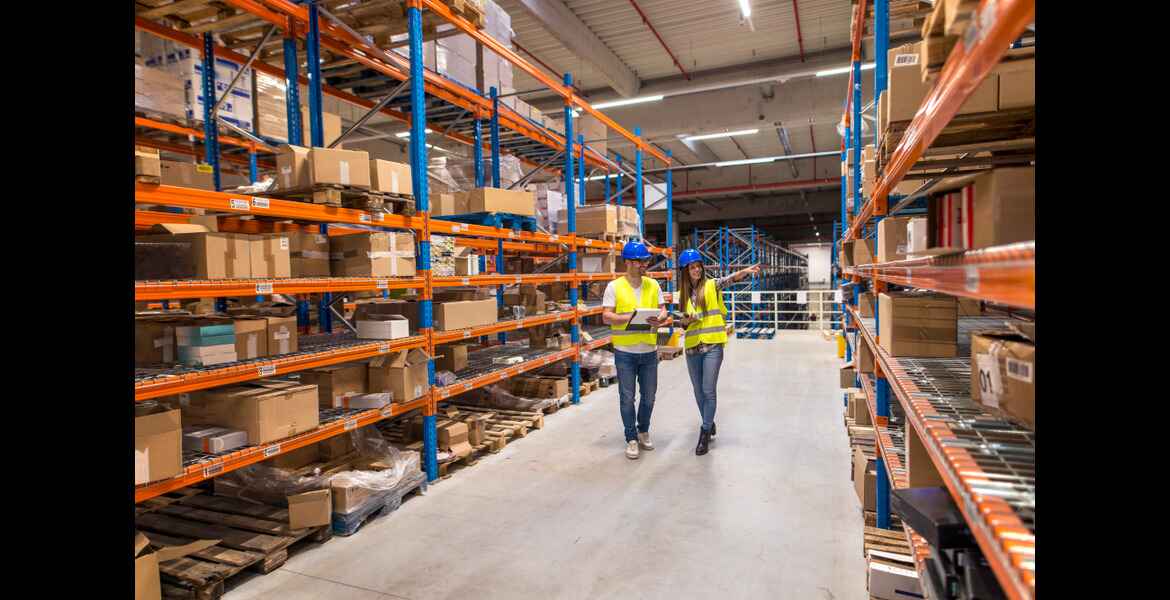
Different Pallet Types And Their Uses: A Guide For Beginners
November 15, 2023
Efficient storage solutions: a beginners guide to rivet shelving
December 15, 2023How To Avoid An Overflowing Warehouse?
Efficient warehouse management is crucial for the success of any business that relies on the storage and distribution of goods. However, it’s not easy. You need to be very strategic with organization and management if you don’t want to end up with an overflowing warehouse. Let’s look deeper into how to do that.
In the world of logistics and supply chain management, a common challenge that warehouse managers often face is the risk of overflow and inventory overload. This not only leads to operational inefficiencies but also presents a significant threat to the overall supply chain.
In this comprehensive guide, we will delve into the key strategies and best practices to prevent warehouse overflow, manage storage effectively, and tackle the warehouse problem of inventory overload.
Understanding the Warehouse Problem
An overflowing warehouse, also known as overflow storage or inventory overload, occurs when a warehouse reaches its maximum capacity and can no longer accommodate incoming inventory. This can lead to a list of issues, including cluttered aisles, reduced accessibility, operational disruptions, increased costs, and potential damage to goods.
The overflow warehouse issue is a multifaceted problem that can result from various factors, including inaccurate demand forecasting, inefficient space utilization, and poor inventory management. The consequences of a warehouse overflow are not only financial but can also harm a company’s reputation if customers experience delays due to inventory mismanagement.
Optimizing Warehouse Management: A Comprehensive Guide to Avoid an Overflowing Warehouse
1. Optimize Warehouse Layout
A well-designed warehouse layout is the foundation of efficient space utilization. Regularly review and optimize the floor plan to accommodate changes in inventory volume and product demand. Consider implementing dynamic storage systems that can be easily adjusted to meet evolving storage needs.
2 Vertical Storage Solutions
The key to avoiding an overflowing warehouse is to Maximize vertical space by utilizing tall storage racks and shelving units. Implementing vertical storage solutions allows warehouses to make the most of their available space, preventing the need for expanding horizontally, which can be costly and logistically challenging.
3 Slotting Optimization
Analyze product slotting to ensure that fast-moving items are easily accessible, reducing the need for excessive movement within the warehouse. This strategic arrangement minimizes the risk of overflow storage by streamlining the order fulfillment process.
4. Accurate Demand Forecasting
Invest in advanced inventory management systems that leverage data analytics and artificial intelligence for accurate demand forecasting. By understanding future demand trends, warehouse managers can optimize storage space and avoid the pitfalls of inventory overload.
5. Real-time Tracking Systems
Implement real-time tracking systems to monitor inventory levels continuously. These systems provide instant visibility into stock levels, allowing warehouse managers to address potential overflow issues before they escalate proactively.
6. ABC Analysis
Classify products based on their importance and consumption rate using the ABC analysis method. This allows for prioritized storage and retrieval, ensuring that high-value and fast-moving items are readily available, reducing the likelihood of an overflow warehouse.
7. Implement Lean Inventory Practices
Adopt lean inventory management principles to minimize excess stock. By maintaining a streamlined inventory, warehouse managers can prevent overflow storage and reduce the risk of inventory overload.
8. Cross-docking
Explore cross-docking strategies to facilitate the direct transfer of goods from receiving to shipping without intermediate storage. This approach reduces the need for long-term storage and minimizes the chances of overflow in the warehouse.
9. Automated Order Picking Systems
Invest in automated order-picking systems to improve the speed and accuracy of order fulfillment. Automation enhances efficiency and helps prevent the accumulation of excess inventory that can lead to warehouse overflow.
10. Regular Stock Checks
Conduct regular stock checks and cycle counts to identify discrepancies between recorded and actual inventory levels. This proactive approach enables swift correction of any issues, preventing the escalation of overflow storage problems.
11. Obsolete Inventory Management
Identify and promptly address obsolete or slow-moving inventory. Implement a systematic approach to manage and liquidate such stock to prevent it from occupying valuable storage space, contributing to warehouse overflow.
12. Collaborative Planning with Suppliers
Maintain open communication with suppliers to align production and delivery schedules with actual demand. Collaborative planning helps prevent overstock situations and reduces the likelihood of an overflow warehouse.
13. Strategic Partnerships with 3PL Providers
Consider strategic partnerships with third-party logistics (3PL) providers to optimize storage and distribution. 3PL providers often have the expertise and resources to manage inventory efficiently, mitigating the risk of warehouse overflow.
14. Regularly Review and Adjust Inventory Levels
Conduct regular reviews of inventory levels and adjust orders based on accurate demand forecasting. This proactive approach helps prevent overordering and ensures that the warehouse operates within its designated capacity.
15. Regularly Train Warehouse Staff
Well-trained warehouse staff are essential for effective inventory management. Regular training programs ensure that employees are familiar with the latest warehouse technologies and best practices, reducing the probability of errors that can lead to overflow.
Common Causes of Warehouse Overflow
1. Inaccurate Forecasting
Accurate demand forecasting is essential for effective warehouse management. If a company fails to predict the demand for its products accurately, it can result in overordering and subsequently lead to an overflow warehouse.
2. Inefficient Space Utilization
Poor space management within a warehouse can contribute to overflow storage. Inefficient use of available space can lead to congestion, making it challenging to handle incoming inventory and causing the existing stock to pile up.
3. Lack of Inventory Visibility
Failing to keep a vigilant check on inventory levels can result in stockouts or excess inventory. Without proper monitoring, warehouse managers may be unaware of approaching capacity limits until it’s too late.
4. Inadequate Warehouse Systems
Outdated or inadequate warehouse management systems (WMS) can hinder the efficiency of operations. Modern WMS solutions provide real-time tracking, inventory visibility, and analytics to help prevent overflow storage.
Wrapping Up
Preventing an overflowing warehouse is a multifaceted challenge. Effectively addressing the challenges associated with warehouse overflow requires a holistic approach that encompasses efficient space utilization, advanced inventory management, streamlined order fulfillment, periodic inventory audits, and collaborative supply chain solutions.
By implementing the strategies highlighted in this guide, businesses can proactively prevent overflow storage, optimize warehouse operations, and ensure a resilient and efficient supply chain. Remember, a well-organized and optimized warehouse not only avoids the warehouse problem of overflow but also lays the groundwork for sustained success in today’s competitive business landscape.
To help you in manage your warehouse perfectly, Midwest Distributions offers cost-effective and high-quality storage solutions for industrial and commercial companies. We specialize in designing custom solutions for warehouses, ensuring they meet the needs of businesses. To learn more about our services, contact a company representative to discuss how they can help create the ideal storage solution for you.

